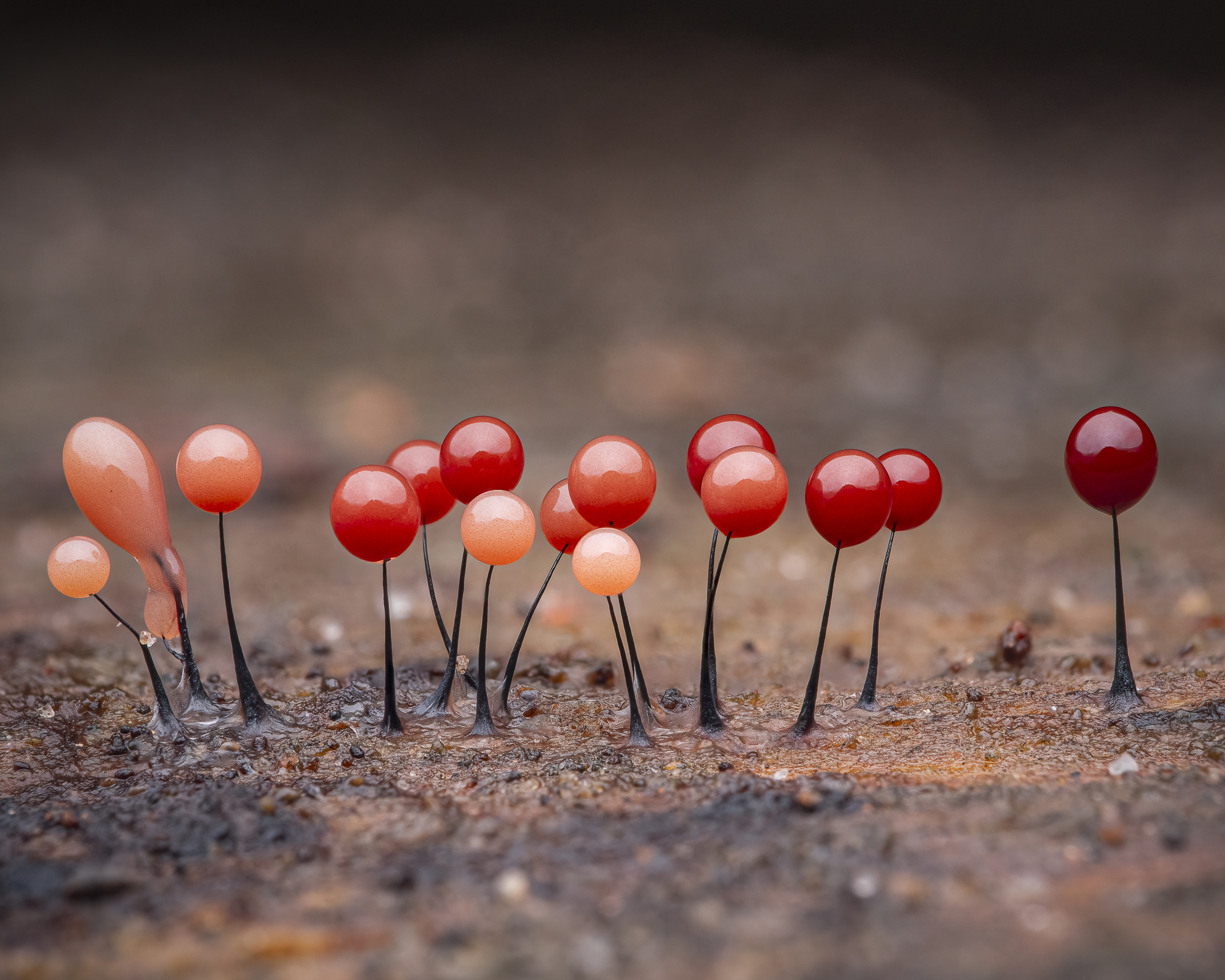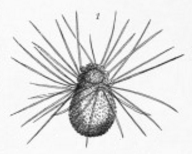|
Protoctist
A protist ( ) or protoctist is any eukaryotic organism that is not an animal, land plant, or fungus. Protists do not form a natural group, or clade, but are a paraphyletic grouping of all descendants of the last eukaryotic common ancestor excluding land plants, animals, and fungi. Protists were historically regarded as a separate taxonomic kingdom known as Protista or Protoctista. With the advent of phylogenetic analysis and electron microscopy studies, the use of Protista as a formal taxon was gradually abandoned. In modern classifications, protists are spread across several eukaryotic clades called supergroups, such as Archaeplastida ( photoautotrophs that includes land plants), SAR, Obazoa (which includes fungi and animals), Amoebozoa and " Excavata". Protists represent an extremely large genetic and ecological diversity in all environments, including extreme habitats. Their diversity, larger than for all other eukaryotes, has only been discovered in recent decade ... [...More Info...] [...Related Items...] OR: [Wikipedia] [Google] [Baidu] |
Golden Alga
The Chrysophyceae, usually called chrysophytes, chrysomonads, golden-brown algae, or golden algae, are a large group of algae, found mostly in freshwater. Golden algae is also commonly used to refer to a single species, '' Prymnesium parvum'', which causes fish kills. The Chrysophyceae should not be confused with the Chrysophyta, which is a more ambiguous taxon. Although "chrysophytes" is the anglicization of "Chrysophyta", it generally refers to the Chrysophyceae. Members Originally they were taken to include all such forms of the diatoms and multicellular brown algae, but since then they have been divided into several different groups (e.g., Haptophyceae, Synurophyceae) based on pigmentation and cell structure. Some heterotrophic flagellates as the bicosoecids and choanoflagellates were sometimes seen as related to golden algae too. They are now usually restricted to a core group of closely related forms, distinguished primarily by the structure of the flagella in motile cel ... [...More Info...] [...Related Items...] OR: [Wikipedia] [Google] [Baidu] |
Slime Mold
Slime mold or slime mould is an informal name given to a polyphyletic assemblage of unrelated eukaryotic organisms in the Stramenopiles, Rhizaria, Discoba, Amoebozoa and Holomycota clades. Most are near-microscopic; those in the Myxogastria form larger plasmodial slime molds visible to the naked eye. The slime mold life cycle includes a free-living single-celled stage and the formation of spores. Spores are often produced in macroscopic multicellular or multinucleate fruiting bodies that may be formed through aggregation or fusion; aggregation is driven by chemical signals called acrasins. Slime molds contribute to the decomposition of dead vegetation; some are parasitic. Most slime molds are terrestrial and free-living, typically in damp shady habitats such as in or on the surface of rotting wood. Some myxogastrians and protostelians are aquatic or semi-aquatic. The phytomyxea are parasitic, living inside their plant hosts. Geographically, slime molds are cosmopo ... [...More Info...] [...Related Items...] OR: [Wikipedia] [Google] [Baidu] |
Diaphoretickes
Diaphoretickes is a major group of eukaryote, eukaryotic organisms spanning over 400,000 species. The majority of the earth's biomass that carries out photosynthesis belongs to Diaphoretickes. In older classification systems, members of the Diaphoretickes were variously placed in the Kingdom (biology), kingdoms Protozoa or Protist, Protista. Etymology The name Diaphoretickes derives (''diaforetikés'') meaning diverse, dissimilar, referring to the wide morphology (biology), morphological and cellular diversity among members of this clade. History Eukaryotes, organisms whose cells contain a cell nucleus, nucleus, have been traditionally grouped into four kingdom (biology), kingdoms: animals, plants, fungi and protists. In the late 20th century, molecular phylogenetic analyses revealed that protists are a paraphyletic assortment of many independent evolutionary lineages or clades, from which animals, fungi and plants evolved. However, the relationships between these clades re ... [...More Info...] [...Related Items...] OR: [Wikipedia] [Google] [Baidu] |
Paleoproterozoic
The Paleoproterozoic Era (also spelled Palaeoproterozoic) is the first of the three sub-divisions ( eras) of the Proterozoic eon, and also the longest era of the Earth's geological history, spanning from (2.5–1.6 Ga). It is further subdivided into four geologic periods, namely the Siderian, Rhyacian, Orosirian and Statherian. Paleontological evidence suggests that the Earth's rotational rate ~1.8 billion years ago equated to 20-hour days, implying a total of ~450 days per year. It was during this era that the continents first stabilized. Atmosphere The Earth's atmosphere was originally a weakly reducing atmosphere consisting largely of nitrogen, methane, ammonia, carbon dioxide and inert gases, in total comparable to Titan's atmosphere. When oxygenic photosynthesis evolved in cyanobacteria during the Mesoarchean, the increasing amount of byproduct dioxygen began to deplete the reductants in the ocean, land surface and the atmosphere. Eventually all surf ... [...More Info...] [...Related Items...] OR: [Wikipedia] [Google] [Baidu] |
Malawimonadida
Malawimonads (order Malawimonadida) are a small group of microorganisms with a basal position in the evolutionary tree of eukaryotes, containing only three recognized species. They're considered part of a paraphyletic group known as "Excavata". Evolution It is clear that the malawimonads are a monophyletic clade at the base of Eukaryota, but there is no consensus on the specific relationships between other basal groups, such as Discoba, Metamonada, Ancyromonadida and Podiata. The sister group to Malawimonadida varies greatly between analyses. Some phylogenetic analyses find Malawimonadida as the sister group to Podiata. Other analyses recover Malawimonadida as the sister group of Discoba or Metamonada. Very few modern analyses recover the three clades, Malawimonadida, Discoba and Metamonada, as a monophyletic Excavata. Taxonomy History The malawimonads were first described as order Malawimonadida in 2003 by Thomas Cavalier-Smith. In 2013 they were also described as a cl ... [...More Info...] [...Related Items...] OR: [Wikipedia] [Google] [Baidu] |
Stramenopiles
The stramenopiles, also called heterokonts, are Protist, protists distinguished by the presence of stiff tripartite external hairs. In most species, the hairs are attached to flagella, in some they are attached to other areas of the cellular surface, and in some they have been secondarily lost (in which case relatedness to stramenopile ancestors is evident from other shared cytological features or from genetic similarity). Stramenopiles represent one of the three major clades in the SAR supergroup, SAR Supergroup (biology), supergroup, along with Alveolate, Alveolata and Rhizaria. Stramenopiles are Eukaryote, eukaryotes; most are single-celled, but some are multicellular including some large seaweeds, the brown algae. The group includes a variety of algal protists, heterotrophic flagellates, opalines and closely related proteromonad flagellates (all Endosymbiont, endobionts in other organisms); the actinophryid Heliozoa, and oomycetes. The tripartite hairs characteristic of the ... [...More Info...] [...Related Items...] OR: [Wikipedia] [Google] [Baidu] |
SAR Supergroup
SAR is a highly diverse clade of eukaryotes, often considered a supergroup, that includes stramenopiles (heterokonts), alveolates, and rhizarians. It is a node-based taxon (under the Sar name), including all descendants of the three groups' last common ancestor, and comprises most of the now-rejected Chromalveolata. Their sister group has been found to be telonemids, with which they make up the TSAR clade. Harosa is sometimes used synonymously with TSAR. Etymology The name SAR is an acronym derived from the first letters of its three constituent clades; it has been alternatively spelled RAS. The term Harosa (at the subkingdom level) has also been used, with Stramenopiles replaced by its synonym Heterokonta in this variant of the acronym. History of discovery Before the discovery of the SAR supergroup, stramenopiles and alveolates were classified in the supergroup Chromalveolata alongside haptophytes and cryptomonads, being believed to have acquired plastids th ... [...More Info...] [...Related Items...] OR: [Wikipedia] [Google] [Baidu] |
Telonemia
Telonemia is a phylum of microscopic eukaryotes commonly known as telonemids. They are unicellular free-living flagellates with a unique combination of Cell (biology), cell structures, including a highly complex cytoskeleton unseen in other eukaryotes. Telonemia shares several distinctive features with its related group, the SAR supergroup, SAR Supergroup (biology), supergroup. Among these features are cortical alveoli, small sacs beneath the cell's surface that act as cushions, providing support and helping to maintain the cell's shape. Additionally, they possess tripartite mastigonemes, complex three-part hair-like structures on their flagella, the whip-like tails used for movement. These structures enhance their swimming capabilities by increasing resistance against water. Furthermore, Telonemia is equipped with filopodia, very thin, thread-like projections extending from the cell body. These projections can serve various purposes, such as aiding in movement or capturing foo ... [...More Info...] [...Related Items...] OR: [Wikipedia] [Google] [Baidu] |
Haptista
Haptista is a proposed group of protists made up of centrohelids and haptophytes. Phylogenomic studies indicate that Haptista, together with ''Ancoracysta twista'', forms a sister clade to the SAR supergroup#Internal phylogeny, TSAR Supergroup (biology), supergroup, but it may also be sister to the Cryptista (+Archaeplastida). It is thus one of the earliest diverging Diaphoretickes. Taxonomy Based on studies done by Cavalier-Smith, Chao & Lewis 2015 and Ruggiero et al. 2015. * Subphylum Centroheliozoa Cushman & Jarvis 1929 sensu Durrschmidt & Patterson 1987 [Heliozoa Haeckel 1862 stat. n. Margulis 1974 em. Cavalier-Smith 2003] ** Class Centrohelea Kuhn 1926 stat. n. Cavalier-Smith 1993 [Centroplastiales; Centrohelina Hartmann 1913; Centroplasthelida Febvre-Chevalier 1984] * Subphylum Haptophyte, Haptophytina Cavalier-Smith 2015 (Haptophyta Hibberd 1976 sensu Ruggerio et al. 2015) ** Clade Rappemonada Kim et al. 2011 *** Class Rappephyceae Cavalier-Smith 2015 ** Clade Haptomonada ( ... [...More Info...] [...Related Items...] OR: [Wikipedia] [Google] [Baidu] |
Cryptista
Cryptista is a clade of alga-like eukaryotes. It is most likely related to Archaeplastida which includes plants and many algae, within the larger group Diaphoretickes. Other characteristic features of cryptophyte mtDNAs include large syntenic clusters resembling α-proteobacterial operons that encode bacteria-like rRNAs, tRNAs, and ribosomal protein genes. Additionally, they are an evolutionarily significant lineage found in mostly marine, glacial and freshwater environments. Although it has sometimes placed along with Haptista in the group Hacrobia, within the kingdom Chromista, most recent studies have found that Hacrobia is not a clade. For example, in 2016, a broad phylogenomic study found that cryptists fall within the group Archaeplastida, while haptophytes are closely related to the SAR supergroup. Taxonomy Based on studies done by Cavalier-Smith, Chao & Lewis 2015 * Corbihelia ** Clade Endohelia Cavalier-Smith 2015 *** Clade Endohelea Cavalier-Smith 2012 * Cla ... [...More Info...] [...Related Items...] OR: [Wikipedia] [Google] [Baidu] |
Embryophyte
The embryophytes () are a clade of plants, also known as Embryophyta (Plantae ''sensu strictissimo'') () or land plants. They are the most familiar group of photoautotrophs that make up the vegetation on Earth's dry lands and wetlands. Embryophytes have a common ancestor with green algae, having emerged within the Phragmoplastophyta clade of freshwater charophyte green algae as a sister taxon of Charophyceae, Coleochaetophyceae and Zygnematophyceae. Embryophytes consist of the bryophytes and the polysporangiophytes. Living embryophytes include hornworts, liverworts, mosses, lycophytes, ferns, gymnosperms and angiosperms (flowering plants). Embryophytes have diplobiontic life cycles. The embryophytes are informally called "land plants" because they thrive primarily in terrestrial habitats (despite some members having evolved secondarily to live once again in semiaquatic/ aquatic habitats), while the related green algae are primarily aquatic. Embryophytes are complex ... [...More Info...] [...Related Items...] OR: [Wikipedia] [Google] [Baidu] |






